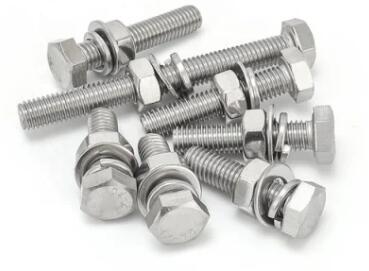How does a bolt differ from a screw
2023-10-31
Bolts and screws are both types of fasteners, but they differ in their design and primary usage. Here are the key distinctions between a bolt and a screw:
1. Function:
- Bolt: Bolts are typically used to create a removable and adjustable connection between two or more components. They rely on a nut or threaded component to secure the joint. Bolts are often used when the components being fastened together need to be easily disassembled for maintenance or repairs.
- Screw: Screws are used to fasten components together permanently. They create their own internal or external threads within the material they are being inserted into. Screws are typically used when a permanent connection is needed, such as in woodworking or attaching components to a base material.
2. Threads:
- Bolt: Bolts usually have a smooth, unthreaded portion (the shank) just below the head. The threaded portion of a bolt starts a short distance from the head and extends down the shaft.
- Screw: Screws have threads along their entire length, starting from the tip and extending up to the head.
3. Head Shape:
- Bolt: Bolt heads come in various shapes, such as hexagonal (hex) heads, square heads, round heads, etc., depending on the specific type of bolt. The head is designed for use with a wrench or socket.
- Screw: Screw heads vary widely and include flat heads, oval heads, pan heads, Phillips heads, and more. The head is often designed for use with a screwdriver.
4. Usage:
- Bolt: Bolts are commonly used in applications where components need to be joined and disassembled easily, such as in machinery, vehicles, and construction.
- Screw: Screws are used in applications where a permanent and strong connection is required, such as in carpentry, metalworking, or securing objects to a surface.
5. Nut or No Nut:
- Bolt: Bolts require a separate nut to secure the joint. The nut is threaded onto the bolt to create clamping force.
- Screw: Screws do not require a separate nut because they create their own threads within the material they are driven into.
In summary, the main difference between a bolt and a screw lies in their intended use and design. Bolts are used for removable and adjustable connections and require a nut, while screws are used for permanent connections and create their threads. The specific choice between a bolt and a screw depends on the application and the nature of the connection required.



